Historical Sites
Update:2025/11/28
- Traditional Townhouse Museums
- The site of Sen-no-Rikyu's Residence
- Old Sakai Lighthouse
- Statue of Princess of the Dragon Place (Otohime-san)
- Old Hamadera-koen Station Building
- Old Tenno Reservoir
Traditional Townhouse Museums
Combined ticket available for 700 yen for entry to three townhouses.
Access: A 3-minute walk from Takasujinsha station (Hankai Line) and a 5-minute walk from Shichido station (Nankai Line)
Fukusuke Exhibition
Fukusuke dolls, which have been cherished as lucky charms that bring happiness since the Edo period, will be on display at the Old Yamaguchi Family Residence, Old Seigakuin Mountain Priest Dojo, and Old Gunsmith Workshop and Residence. Admission fee is required to view the exhibits.
Date: December 24th (Wed) ~ January 19th (Mon)
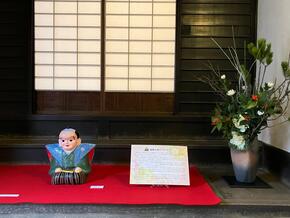 Photos from last year's exhibition
Photos from last year's exhibition
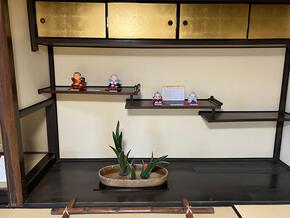
Old Gunsmith Workshop and Residence
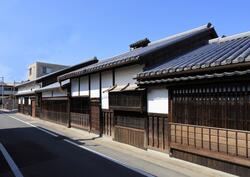
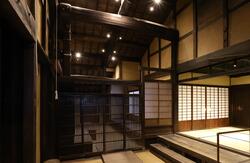
The Old Gunsmith Workshop and Residence offers visitors with a unique, interactive experience, where you can learn all about gun manufacturing in the actual place they were made. You can really feel the history as you walk through the workshop and residence, with traditional tatami rooms, exhibition cases, a video about the gunsmith industry in Sakai and even a beautiful Japanese garden you can see through the open shouji sliding doors. There is also a room where you can try blowing the bellows and you can also practice using a mallet while following the instructions of the video.
Opening hours: 10:00-17:00 (last entry 16:30)
Closed: Every Tuesday and year end and New Year's period (December 29th~January 3rd)
Admission: 500 yen. Free entrance for junior high school students and under, persons with disabilities and their accompaniment, those who are 65 and over living in Sakai
*No car parking is available so please use public transport
Address: 1-3-22 Kitahatago-cho Nishi, Sakai-ku
Old Yamaguchi Family Residence
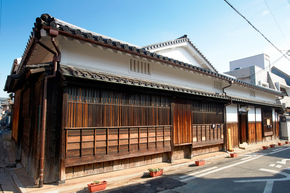
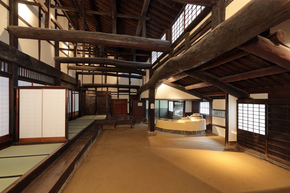
The Old Yamaguchi Family Residence is thought to have been built soon after the battle between Toyotomi Hideyoshi and Tokugawa Ieyasu in 1615, when Sakai was burned to the ground. The structure evokes the atmosphere of a wealthy merchant's residence and is an extremely valuable example of the architecture of the early Edo period. It was designated an Important Cultural Property in 1966.
Time: 10:00-17:00 (last entry 16:30)
Closed: Tuesday (however open if a public holiday and closed the next weekday), year end and New Year's period (December 29th~January 3rd)
Admission: 200 yen. Free entrance for junior high school students and under, persons with disabilities and their accompaniment, those who are 65 and over living in Sakai
Access: A 3-minute walk from Ayanocho station (Hankai Line)
*No car parking is available so please use public transport
Address: 1-2-31 Nishikino-cho-Higashi, Sakai-ku
Old Seigakuin Mountain Priest Dojo
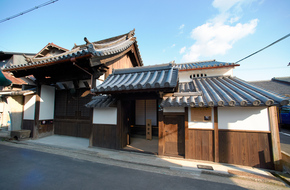
The Old Seigakuin Mountain Priest Dojo is located in the northern tip of Sakai's historical zone. The first recorded mention of this building is on the 1689 edition of the historical map of Sakai. At the end of the 19th century, it was used as a temple school ("terakoya") with the name of Seikodo. Kawaguchi Ekai, the first Japanese person to cross the Himalayas, was born in this area and a pupil of the temple school.
Built in the latter half of the 19th century, it was registered as a National Tangible Cultural Property in 2022.
Time: 10:00-17:00 (last entry 16:30)
Closed: Tuesday (however open if a public holiday and closed the next weekday), year end and New Year's period (December 29th~January 3rd)
Admission: 100 yen. Free entrance for junior high school students and under, persons with disabilities and their accompaniment, those who are 65 and over living in Sakai
Access: A 3-minute walk from Takasujinsha station (Hankai Line) and a 5-minute walk from Shichido station (Nankai Line)
*No car parking is available so please use public transport
Address: 1-3-13 Kitahatago-cho-nishi, Sakai-ku
The site of Sen no Rikyu's Residence

Born in 1522 the oldest son of a wealthy Sakai townsman (in Shukuinnishi) and named Yoshiro, Sen-no-Rikyu began studying the way of the tea ceremony under Kitamuki Dochin at the age of 17. He went on to study under Takeno Jo-oh and pioneered the "wabicha" style of tea. The site of his residence also includes the Tsubaki Well.
Access: Shukuin station (Hankai Tramway)
Address: 1-17-1 Shukuin-cho-Nishi, Sakai-ku
Old Sakai Lighthouse
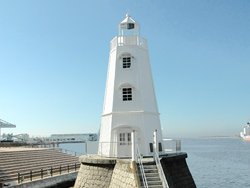
This wooded, hexagonal Western-style lighthouse stands 11.3 meters tall and is located on Old Sakai Harbor's southern seawall. The structure was funded with donations from the citizens of Sakai. Completed in 1877, the lighthouse helped protect ships as they came and went from Sakai Harbor for nearly 100 years. The progressive reclamation of land from the sea forced its closure in 1968. It remains today as one of the symbols of Sakai and has been designated a national historic site in recognition of its status as one of Japan's oldest wooden Western-style lighthouses. (The interior is not open to the general public.)
Access: Sakai station (Nankai Line)
Address: 5-1-22 Ohamakita-machi, Sakai-ku
Statue of Princess of the Dragon Place (Otohime-san)
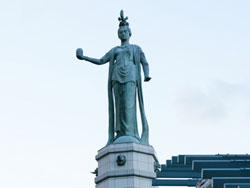
Placed in front of the Ohama Aquarium for the fifth Domestic Industrial Exhibition held in 1902, the statue was removed when the aquarium was closed and torn down due to the construction of the area's coastal industrial zone following the destruction of the area by the No. 2 Muroto typhoon. The statue was restored as a symbol of peace and prosperity on the occasion of the celebration of the 110th anniversary of the incorporation of Sakai in the year 2000.
Access: Sakai station (Nankai Line)
Address: Kita-hato-tottei, Sakai-ku
Old Hamadera-koen Station Building
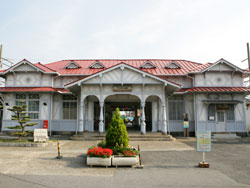
Originally built in 1907, this beautiful wooden station building remains standing today. The structure, which brought together many of the colorful design conventions of the Meiji era, was designed by Dr. Tatsuno Kingo, who is also responsible for the red-brick appearance of Tokyo Station. There is a cafe and gallery located inside of the station building.
Access: Hamadera-koen station (Nankai Line)
Old Tenno Reservoir
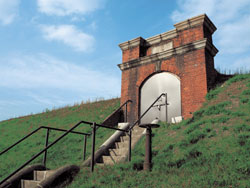
Built in 1910, this facility was active as a waterworks and service reservoir for about 50 years. It is an architecturally important and valuable structure due to its superb design and craftsmanship, including the use of bricks, a new building material at the time, and the incorporation of a triumphal arch design into the facade.
Access: Sakaihigashi station (Nankai Koya Line)
Address: 3-78 Nakamikunigaoka-cho, Sakai-ku
